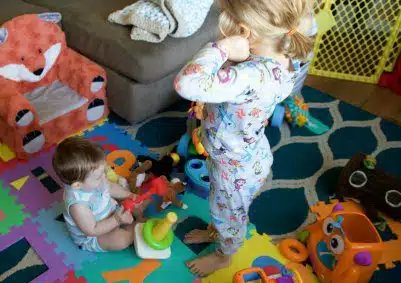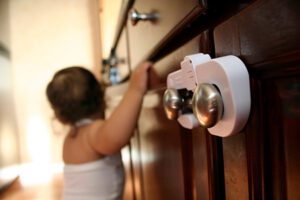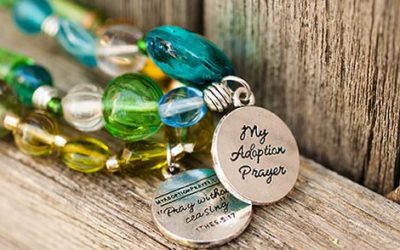When you adopt, if this is your first child, you need to know how to prepare for a baby and most importantly, do some baby proofing in your home. Not only are you adding a new family member to your home, but you’re also bringing a child into a new environment with new people and family dynamics.
There are the safety, security, and emotional needs of your adopted baby to consider, as well as the needs of any other children you have as well. While bringing a newborn to your home is a joyous occasion, the transition may not be a smooth one. But with the right preparation, you can remove some of the obstacles. We’ve got a few tips to help you and your family through the transition!
Safety First – Baby Proofing
Baby proofing your home now is easiest, simply because you have more time now to accomplish things that need to be done. Once you bring your baby home through an infant adoption, it’ll be one less thing to figure out.
We encourage you to take these steps needed to baby-proof your home, room by room. You could set aside one weekend to evaluate your house, room by room, and make it safe. Getting all of this completed will give you peace of mind. Baby proofing your home, room by room:
Bathroom:
Purchase latches for your medicine cabinet, a toilet lock, and a thermometer for determining if your baby’s bathwater is at a safe temp. Plan on moving dangerous products to higher shelves, and move cords to protect from electrical dangers.
Kitchen:
Install safety latches on your bottom cabinets, and latches for lower drawers. Place magnets up higher on your fridge, as they’re a choking hazard. Purchase stove-knob covers and a latch for your oven door. Here are some effective stove-knob covers on Amazon that fit most any stove: Safety 1st Clear View Stove Knob Covers, 5 Count.
Stairs:
Purchase baby gates or fences for the top and bottom of your stairs. If you use the stairs in your home constantly throughout the day, you’ll want a baby gate, which can be opened and closed quickly.
Living room:
Falling and colliding into furniture are the biggest hazards to your baby in this room. So, add some cushioned corner guards (or edging) to your side tables, coffee tables, fireplace, and anything else with sharp corners.
So that a bookshelf doesn’t fall over on baby, make sure that you mount them to the wall. Fasten your TV securely to the wall or an entertainment center so your baby can’t pull it down on themselves. Get heavy-weight picture hooks so your paintings and pictures have no chance of falling. Finally, cordless blinds are best for a home with a baby/toddler; the cords on blinds and curtains are strangling hazards.
Nursery:
By the time you set up your future baby’s room, you might have done plenty of baby proofing already. Until you baby is older than six months, keep all bedding (like pillows and blankets) and stuffed animals out of the crib as they’re a potential suffocation risk. Make sure that baby’s sheets and mattress fit snugly. Consider purchasing “finger-pinch” guards for the hinges on doors. Here’s a nice set of four: Safety 1st Finger Pinch Guards.
Other considerations:
Install safety gates for the entrance or exit to any room that will be off-limits to the baby. Check whether any of your houseplants are toxic: some can be poisonous. Cover your heating vents and radiators to avert burns.
If you’re bringing home a baby, toddler, or even an older child who may not have seen many of the typical “dangers” of a home, you’ll need to baby-proof. Covers for the electrical outlets, childproof locks on cupboards doors, and plastic covers for sharp tables or countertop corners are all excellent places to start.
Move any cleaning solutions or other household chemicals into a locked and secured area. Medications should be safely locked away, as well. If there are any firearms in the home, they should be secured in a place, like a safe, where children cannot gain access.
WebMD offers some other great safety tips when it comes to how to prepare for a baby.
Think About Colors for Calm
Moving into a new home with new people, food, sounds, and surroundings can be overwhelming. Whether your adopted child will have their own room or share one, try to keep the color scheme and décor uncluttered and calm. Too much stimulation could cause meltdowns or emotional strain that could be avoided.
Your family dynamics are going to change just as if you’d brought a biological child home from the hospital. If you have other children, they’re going to have some major adjustments too. Make them part of the planning process and give them a role in preparations. They can help you set up the bedroom and decide on bedding colors and themes. If they’ll be sharing a room, allow them to organize the dresser drawers, making room for their new sibling. As you work alongside your children, you’ll have chances to talk about how they’re feeling about the adoption. They’ll have concerns about how it will affect them. They may even wonder if there’s enough love to go around. Opportunities to discuss their concerns will naturally arise when you’re working together to make space for their new sibling. Cocooning with your family fosters trust and bonding. You may be leaving your home less frequently for a while. Stock up on freezer meals or gift cards to your favorite take out places. It’ll reduce stress not to have to worry about meals while you focused on your family. This is another area where you can involve your other children. Have them choose a few meals to freeze or places they’d like to get take out. If they’re old enough, they can help with the cooking too. Bringing home your baby through adoption is exciting, but it can also be stressful. And no one really knows what to expect. While you can’t prepare your home for every possibility, working together as a family can alleviate fears and concerns about the new baby. Finally, you’re all in the transition period together. Everyone will need time, but you’ll find your new normal soon enough. Heidi Keefer is a Content Creator for Lifetime Adoption and has over 15 years of experience in the field of adoption. An author of thousands of articles and social media posts over the years, Heidi enjoys finding new ways to educate and captivate Lifetime’s ever-growing list of subscribers. Heidi has a keen eye for misplaced apostrophes, comma splices, and well-turned sentences, which she has put to good use as a contributor to Lifetime’s award-winning blogs. She has written and published hundreds of adoption articles which explore the various facets of domestic infant adoption today.
Stock Up on Food and Meals
How to Prepare for a Baby – Final Tips






0 Comments